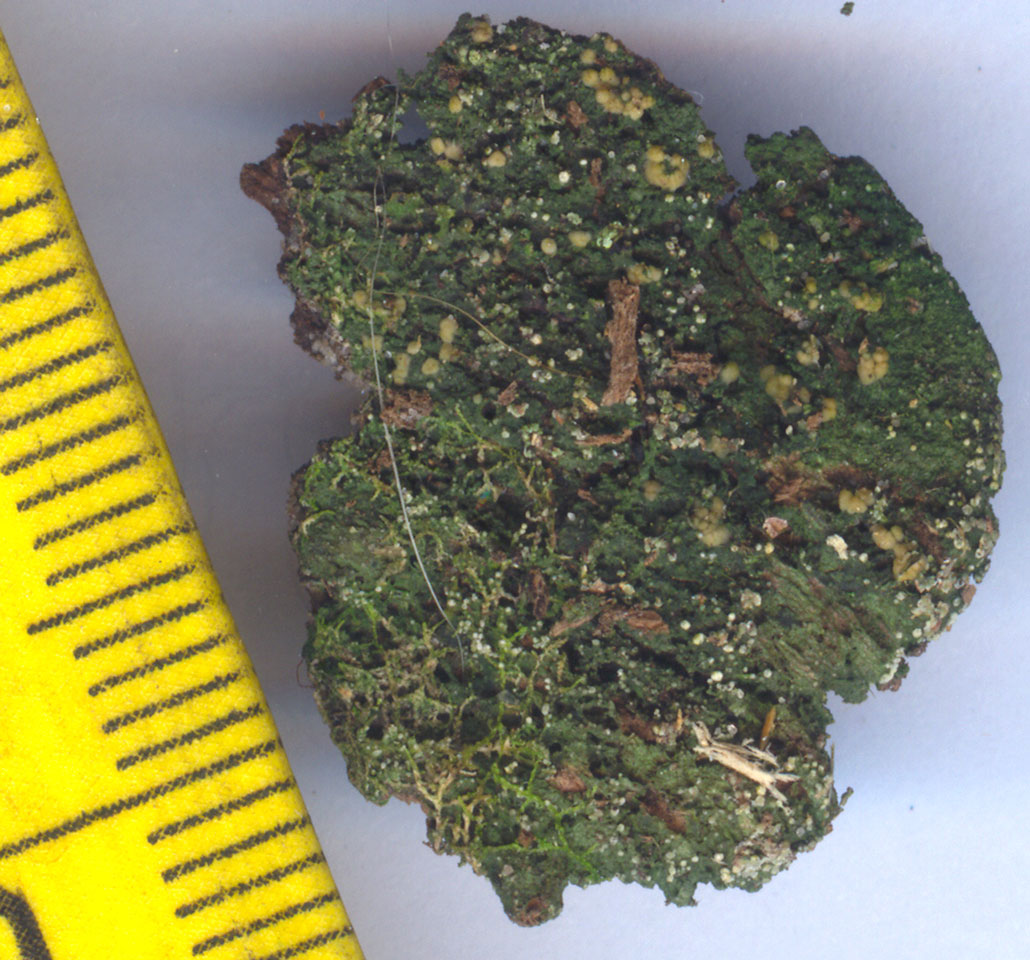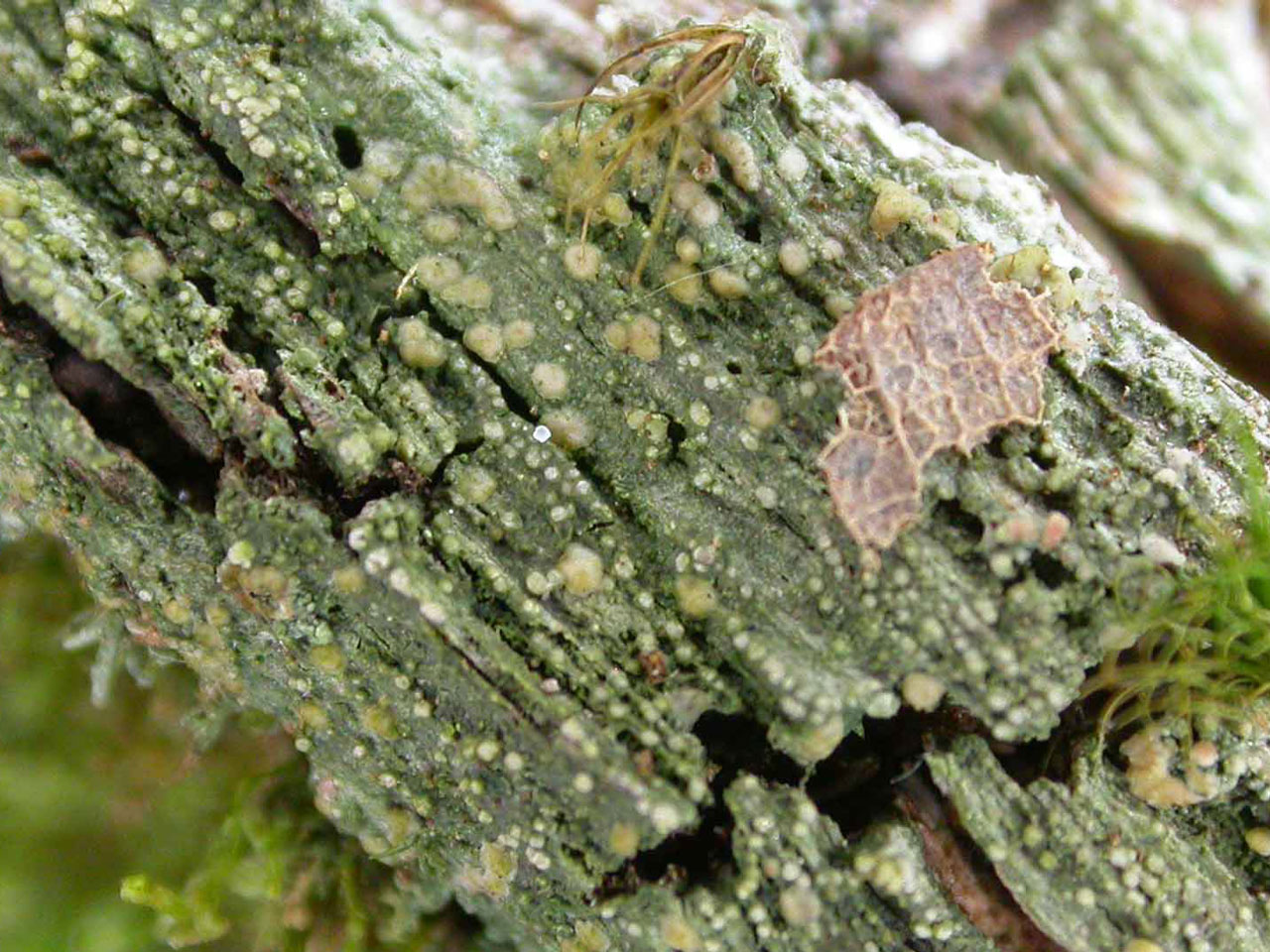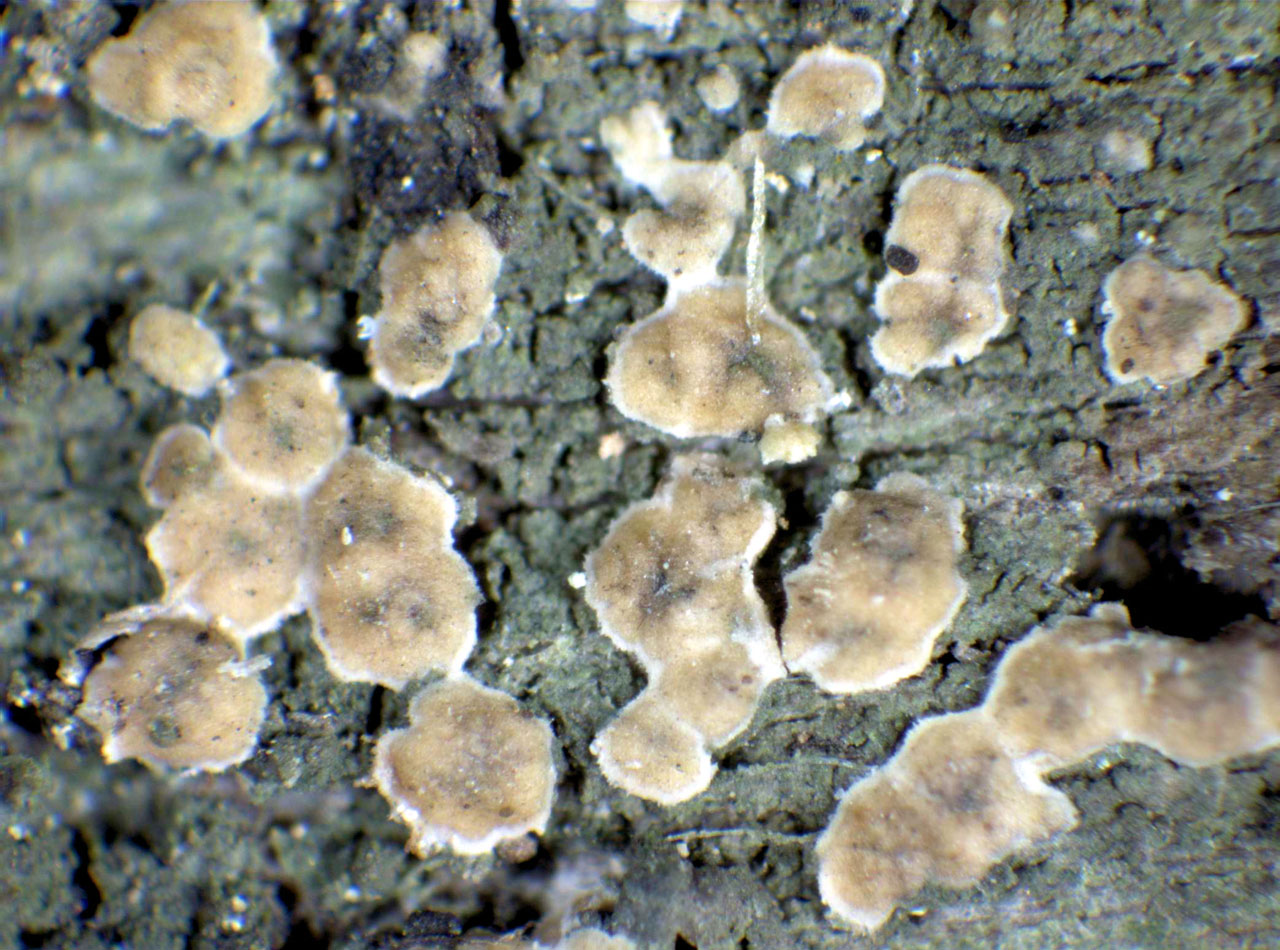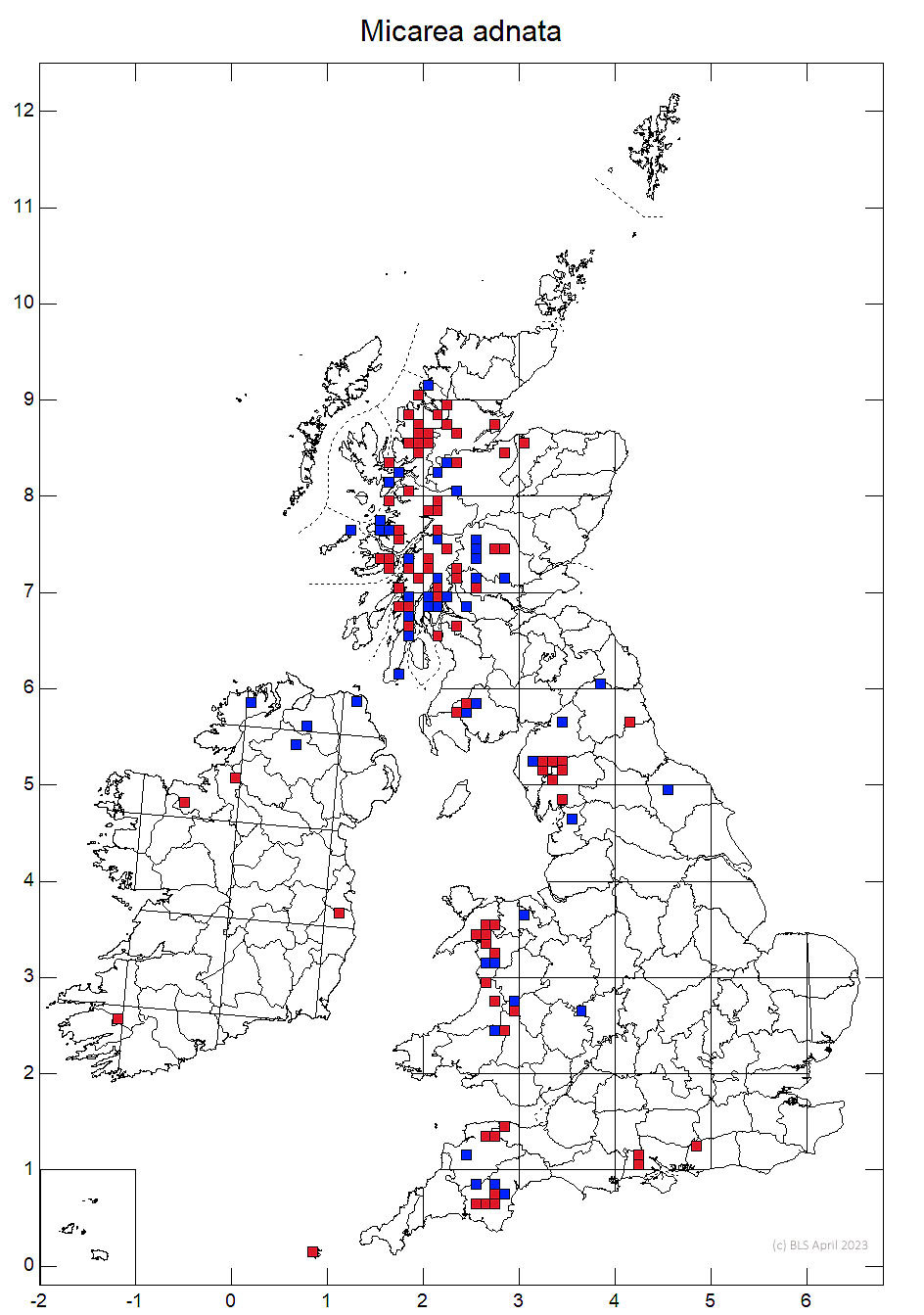Micarea adnata
A Micarea that lurks on lignum and damp bark in shady places, which is rather distinctive in the combination of wide, flattened and pale straw-brown to pale reddish brown apothecia with an appressed white rim and whitish, convex sporodochia. A mainly upland species.
Thallus ± smooth or scurfy, pale grey-green, ± waxy; photobiont cells 4–7 µm diam. Apothecia pale straw-brown to pale reddish brown, at first ± flat with an appressed white rim, later convex, 0.2–0.4 (–0.6) mm diam. or in nodulose clusters to 2 mm across; true exciple indistinct but evident in young apothecia, colourless; hymenium 35–40 µm tall, colourless; hypothecium colourless; paraphyses 1–1.5 µm diam., numerous. Asci 30–35 × 10–12 µm. Ascospores 9–16 × 3–5 µm, ellipsoidal or ovoid to cylindrical, (0-)1-septate. Conidiomata: (a) 80–250 µm diam., whitish, convex sporodochia; with macroconidia 6.5–9.5 × 2.3–3 µm, ellipsoidal to cylindrical, aseptate; (b) 40–60 µm diam., immersed, white pycnidia; with mesoconidia 4–5.5 × 1–1.5 µm, cylindrical. Lichen products not detected by TLC.
Distinguished from the Micarea prasina s. lat. group by the ± smooth, waxy thallus (no goniocysts), apothecium-like sporodochia and the absence of K+ violet pigment.
On wood and debris of old stumps, or on loose bark of old trees, in old Birch, Oak or Pine woodlands; rarely on dry peat hags.

Locally frequent. N.W. & S.W. England, Wales, W. Scotland, rare in S. England (S. Hampshire, W. Sussex), upland Ireland.
A local species found mainly in old woodlands.
Britain: Notable
Cannon, P., Orange, A., Aptroot, A., Sanderson, N., Coppins, B. & Simkin, J. (2022). Lecanorales: Pilocarpaceae, including the genera Aquacidia, Byssoloma, Fellhanera, Fellhaneropsis, Leimonis and Micarea. Revisions of British and Irish Lichens 27: 1-48.
Text by Neil A Sanderson based on Canon et al (2022).



